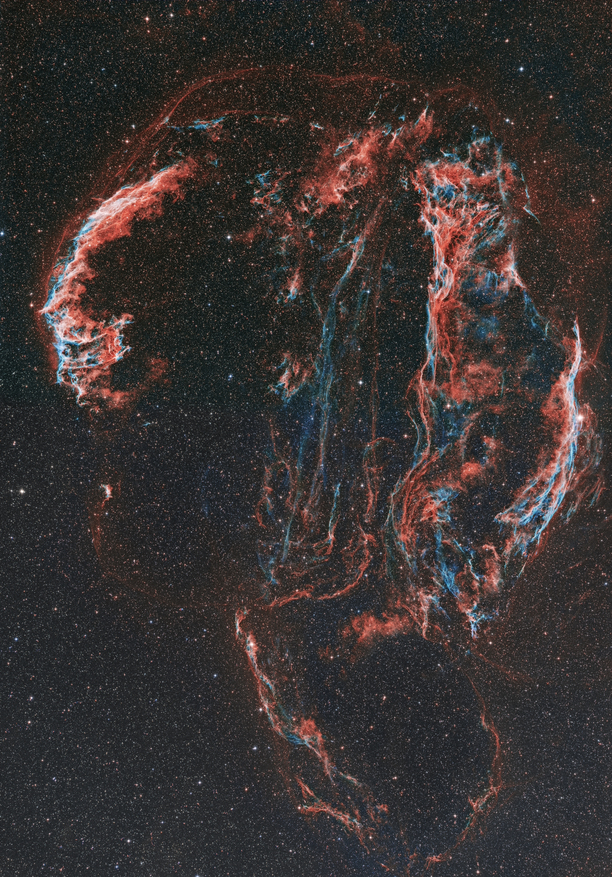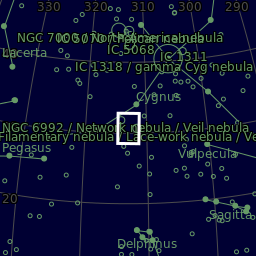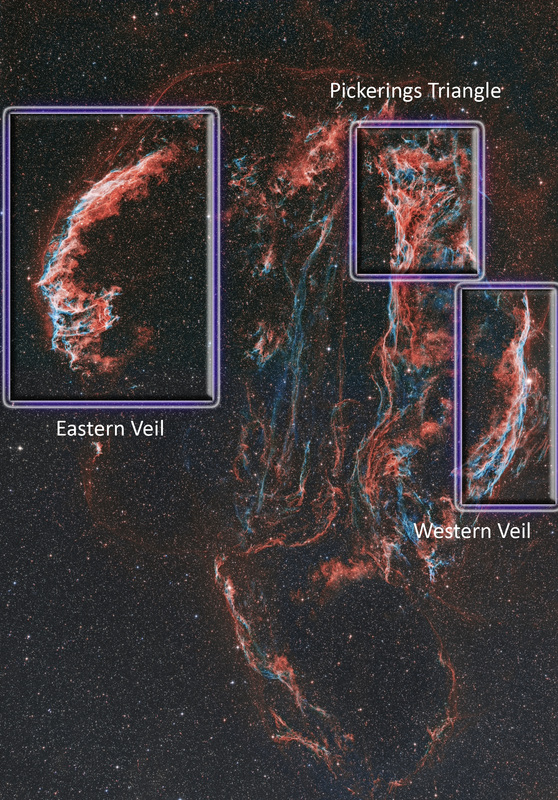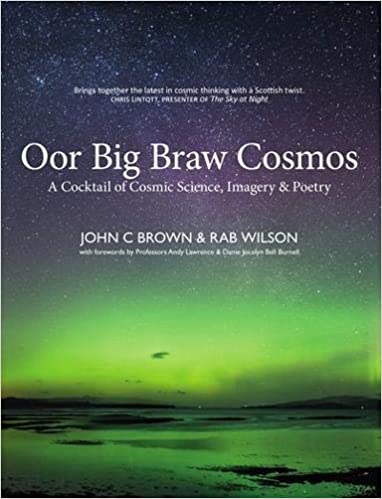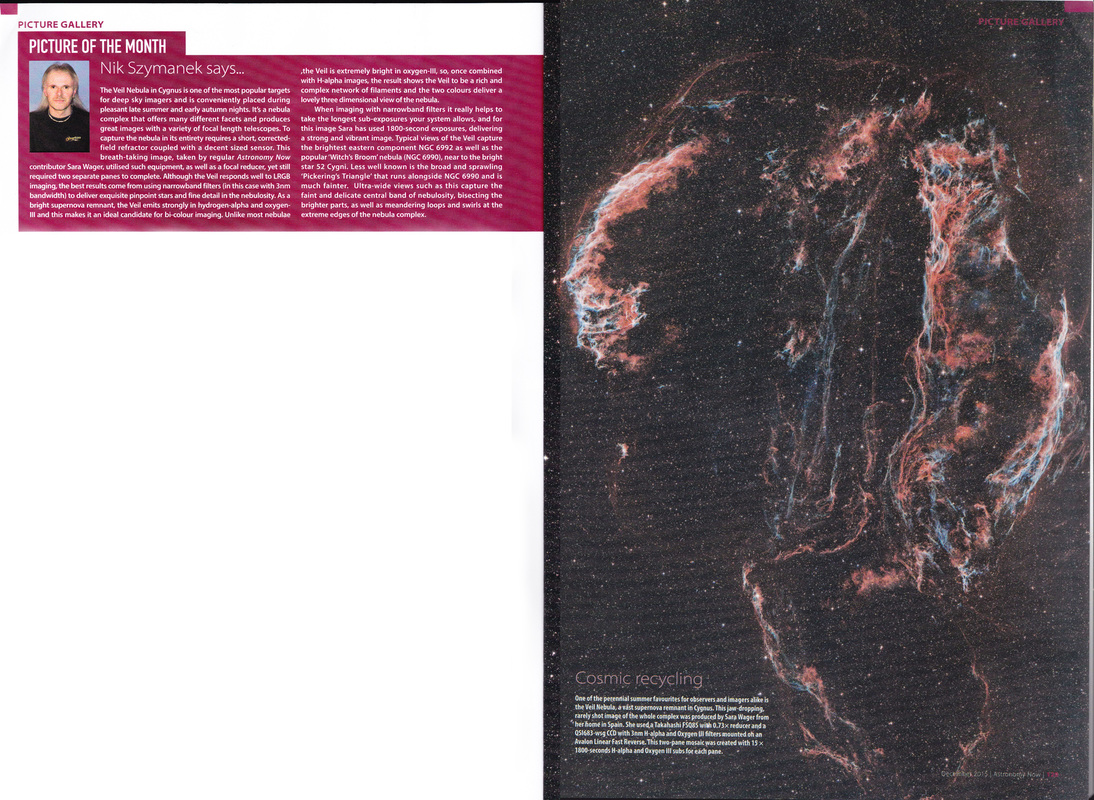The complete Veil complex
|
The Veil Nebula is a cloud of heated and ionized gas and dust in the constellation Cygnus. It constitutes the visible portions of the Cygnus Loop, a large but relatively faint supernova remnant. The source supernova exploded some 5,000 to 8,000 years ago, and the remnants have since expanded to approx 6 times the diameter of the full moon. The distance to the nebula is not precisely known, but Far Ultraviolet Spectroscopic Explorer (FUSE) data supports a distance of about 1,470 light-years.
This is a 2 pane mosaic using the following equipment Details: M: Avalon Linear Fast reverse T: Takahashi FSQ85 with 0.73x reducer C: QSI 683 with 1.25" 3nm Astrodon Ha and OIII filters. Pane 1 - 15x1800s Ha, 15x1800s OIII Pane 2 - 15x1800s Ha, 15x1800s OIII Total time: 30 hours |
Here you can see the three main parts of the Veil complex.
Buy this print |
